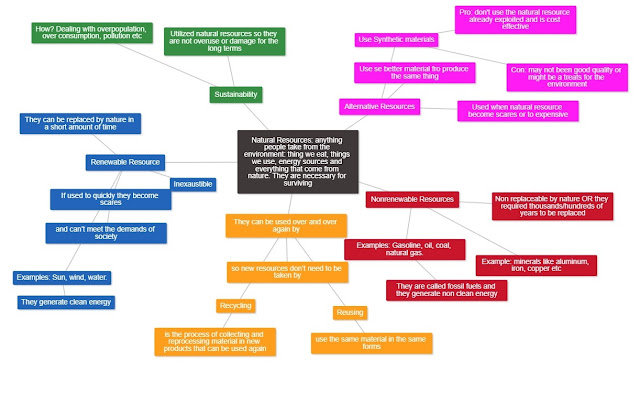Activity 3.2 – Natural Resources Review
 |
| Concept Map of Jerome, 2017 |
Natural resources are somethings we use every day to meet our need. Without natural resources we will not have foods, air, water, energy. So natural resources are essential for human survival. Some natural resources can be quickly replaced by the environment and they are called renewable resources. Others need very longs time to be replaced or they are simply limited, and they are called nonrenewable resources. Nonrenewable resources must used carefully in order to don’t run out of them. However, also renewable resources need attention. If renewable resources are depleted too faster than the time necessary for the nature to replace them, we might run out also of renewable resources too (Jerome, 2017). Since natural resources are so important, the society need resource sustainability. Resource sustainability means use natural resources in a way that “meets the needs of the present without compromising the ability of future generations to meet their own needs” (Circular Ecology, n.d.). One way to do that is to use natural resources alternative or synthetic materials. They do not deplete natural resources, but they might have negative impact on the environment. Another way is through recycling and reuse, so make new material from old ones and reuse the same resource as it is (Jerome, 2017). Sustainability is more than that and it is necessary to ensure the protection of resources and therefore the human survival.
References:
Jerome, B. A. (Producer). (2017). Exploring Natural Resources [Video file]. Visual Learning Systems. Retrieved from https://proxy.nvc.alamo.edu:4443/login?url=https://search.alexanderstreet.com/view/work/bibliographic_entity%7Cvideo_work%7C4034509?account_id=5482&usage_group_id=117605
Circular Ecology. (n.d.). Sustainability and Sustainable Development. Retrieved from http://www.circularecology.com/sustainability-and-sustainable-development.html#.XZiwjUZKhPY.

Comments
Post a Comment